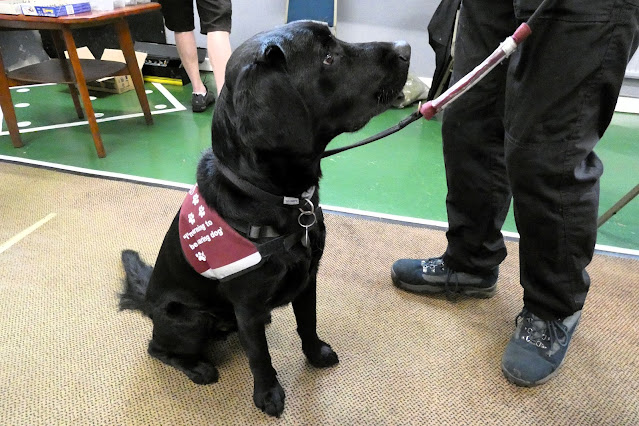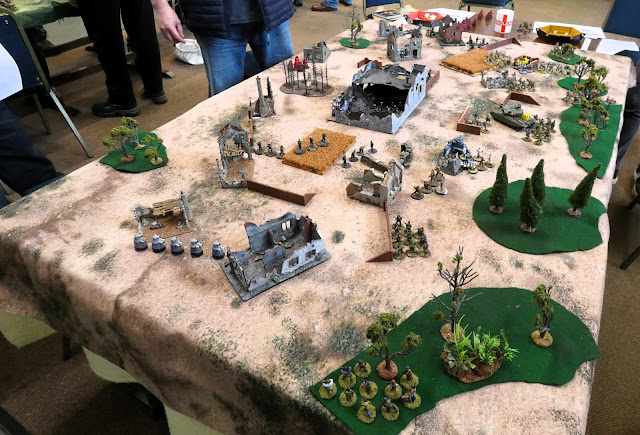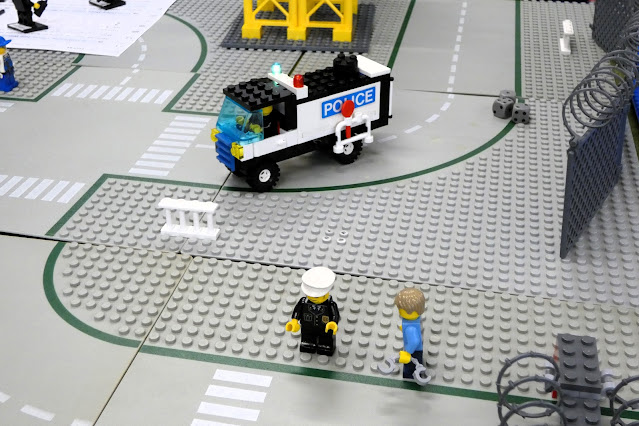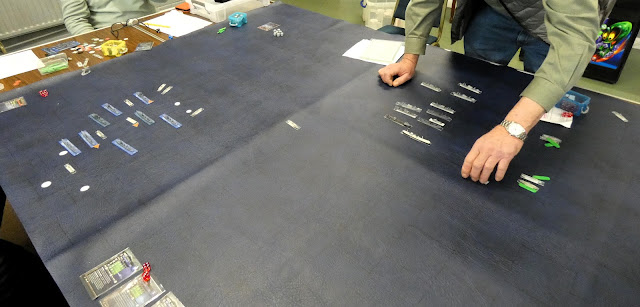This weekend at club, myself Jack and Steve M, pooled forces and rulesets to organise a 28mm AWI scenario using the rules Rise & Fight Again (R&FA) from Stand to Games, link below.
I've recently restarted my AWI project to build a Mohawk Valley collection of figures, mainly using the Perry range of miniatures, for the small actions along the Hudson and Mohawk rivers, which has seen the plan broadened to enable the collection to facilitate field forces for the bigger battles that were a feature of the war in its early years, particularly in the northern theatre.
At Jack's prompting and with Steve M up to speed with the rules I hastily pulled together a scenario loosely based on the Battle of Chatterton Hill from the larger Battle of White Plains, using the scenario from the British Grenadier scenario book as a guide to my setup and replacing the Hessians with a British brigade instead, renaming this fictitious action after a very familiar local landmark and coming up with a selection of commanders to replace their historical counterparts.
 |
| A map of the Battle of White Plains, the inspiration for this particular scenario |
Steve and I last played a game using R&FA back in September 2018, using Steve's 15mm collection, soon after their publication, and on the back of our playtesting a series of Peninsular War scenarios for the sister rule set Over The Hills for Napoleonics, with a lot of similarities between the two sets, but including a few significant changes to capture some of the unique aspects of the AWI theme.
 |
| Steve M's 15mm collection in action during our first game using R&FA back in 2018. JJ's Wargames - Rise & Fight Again |
If the rules are unfamiliar to you then you can follow the link above to my personal blog where I covered our first game getting our collective heads around them and highlighting some of the key changes from the Napoleonic set but equally importantly retaining the original concept of Fatigue as a way of representing the strength and quality of individual units and using the Fatigue Score (FS) as a way to measure the morale of units during a battle, with FS lost through combat and stressful or difficult manoeuvring, which could be rallied off when the opportunity presented, and if enough command capability was available to do so.
.jpg) |
| https://standtogames.co.uk/shop/ols/products/rise-and-fight-again-rules |
With my new additions adding to a growing collection of figures, bolstered by extra units provided by Jack, I arranged the table for our game as seen below, based on the scenario map above, seen here at the start of play with the Rebels set up on the position as indicated on the map and the first British brigade entering from top right of picture.
 |
| The British command table with brigade cards arranged together with reinforcement units yet to arrive on table. |
I was keen to reacquaint myself with the orders and brigade morale system which I facilitate with my own command cards, illustrated below, using dice to record the FS points for each brigade that are reduced as combat FS, not movement penalty FS is inflicted during the game, which as mentioned can be rallied off by units on the table, but is simultaneously deducted from the brigade and army total which cannot be remedied by rallying.
Thus once the dice are removed from the card the brigade is considered broken, and when more than half the army FS has similarly been affected by broken brigades, the army as a whole is forced to break off.
Each brigade commander is numbered as per the card number, bottom right on the national flag, and centre bottom a six-sided 'orders' dice is placed to show what orders the brigade is operating under at any given time, with a similar orders dice placed next to a tabletop commander to indicate new orders having been dispatched and reminding the owning player to test for receipt in the subsequent turn or turns, with successful communication resulting in a new order indicated on the brigade card.
Orders are very specific about what units in a brigade must do, can do and cannot do and how many units have to comply with those orders at any time, and the system is one of the best paper based ones I have come across for modelling orders without the tiresome need to write specifics on a separate note.
With the players briefed about the respective positions of the two sides, with the British looking to clear the hill of Rebels to turn a more stronger nearby Rebel line, but keen to avoid a heavy casualty bill whilst doing so, and with the Rebel command likewise acting as the proverbial speed bump, whilst hoping to crack the British sump with accurate cannon fire and massed musketry against assaulting redcoats, before being forced to surrender the ground.
 |
| British Light Infantry supported by Jagers and Light Dragoons of Mathew's brigade enter the table to commence our game |
The British attack developed on the Rebel left as the light-bobs, jagers and 17th LD closed on the flank of the hill with the Jager skirmish line clearing the rocky slopes of militia skirmishers making full use of the range advantage of their rifles and their 'Good Shots' firing capability inflicting the first Rebel FS losses in the game as their skirmish screen fell back.
 |
| Combined British Light Infantry, Jagers and Light Dragoons were the spearhead of the British attack to clear the hill of rebels. |
As the British entered the table they were supported by overwatch artillery preparation which also inflicted the occasional FS hit from the three 6-pdr and three 12-pdr guns deployed to support the attack.
The British artillery support was limited though, simply by the fact that once the redcoats got level with the militia emplacement their fire would cease in that direction and similarly once follow up brigades moved onto the forward slopes their fire would likely cease entirely.
 |
| The 3rd New Yorkers deploy in open order to avoid overshoots from Erskine's British guns on overwatch on the front slopes of Telegraph Hill |
However round shot bowling along the forward approaches to the hill caused a level of discretion from the 3rd New York Continentals as they opted to become a more difficult target by deploying in open order and later falling back into dead ground to await any redcoats heading their way.
 |
| Graham's New York Militia skirmish from the woods on the front slopes |
The main British assault for their two brigades of 'hatmen' would commence from turn two to turn four dependent on a D3 die roll and the British roll determined their march would delay their on-table arrival to turn four, leaving the light infantry to tackle the defences alone until that time.
 |
| Woodford's personal command and his force reserve of Continentals on the rear slopes, ready to repel any British breakthrough onto the summit of the hill |
The attack by the light infantry was pressed with typical elan one would have expected from an elite unit as they crested the forward slope only to have their subsequent charge met by blasts of cannister from the Rebel 6-pdrs turned to face their approach.
 |
| After a long cross country march, the British line brigades make their appearance as the light bobs press their attack. |
Close range combat is referred to as combat contact in the rules and combines the effects of close-range fire-fights as well as the occasional crossing of bayonets, with charging infantry having to pass a morale check to press their attack, simulated by rolling less than or equal to their current FS on a D10.
 |
| The militia and supporting skirmishers open fire on the redcoats as they press their attack on the hill |
Similarly defenders have a range of options facing a close combat, ranging from standing to deliver close-range fire to evasion and similarly requiring a test of nerve to manoeuvre accordingly.
The first charge by the light-bobs was met by resolute gunners standing to their guns and letting fly with their cannister rounds inflicting two Fatigue Hits (FH) stopping the charge in its tracks but not sufficient to cause them to fall back, needing 3FH for such a response.
 |
| With the battle reaching a climax, Woodfords Continental brigade deploy forward onto the summit ready to repel any British breakthrough |
However as if to emphasise their determination to stay put the Rebel guns were supported by their nearby skirmish line which added another FH to the total that went with one more FH gained by the British light infantry for charging through disruptive terrain to get at the gun line.
The British lights were barely holding their ground on 5FS remaining from their starting total of 9, and to rub salt in the wounds their commander Brigadier-General Mathew was one of the casualties in the first attack.
 |
| The militia are broken and redcoats threaten to push forward onto the summit as Woodford's Continentals prepare to resist their advance. |
The fight for the forward slope was in the balance as the support brigades of 'hat-men' under Brigadier-General Frost pressed forward in their support towards the emplaced militia, causing 2FH on the unit with fire from supporting Tory militia, and as the Continentals of Colonel Woodford's reserve moved up to meet the impending attack, the next round of fighting commenced around the guns.
 |
| The Continentals move forward as the militia on the right of picture rout back to the rear. |
The British light infantry successfully passed their FS test to charge in again, now requiring the Rebel gunners to successfully stand by rolling 7 or less on a D10 but managing to roll an 8 seeing the gunners nerve fail at the worst possible moment and causing them to run back a full move deserting the guns.
 |
| The British have cleared the Rebels from the emplacements and driven off the gun crews as Continentals move forward to oppose them |
On the emplacements the redcoats seemingly recognising nervous militia to their front stormed forward after firing a volley at the rebel defenders using their British 'Three Cheers' special attribute and seeing the resulting casualties break the militia who fled back in rout before contact could be made.
It was at this stage of play we decided to conclude the playing of our game and our discussions about the rules down the pub, but I thought it would be interesting to see how the battle was progressing with regard to opposing objectives at the end of play seeing where the respective FS scores were and with one Rebel brigade (Scott's Militia) already broken.
The starting Army Fatigue Score Totals at start of play were 83 for the British and 53 for the Rebels, that saw combat losses in FS for each force equal 18 (22%) for the British and 13 (24%) for the Rebels, a result indicating successful progress by the British and leaving an uphill (no pun intended) challenge for the Continentals to bleed the main British assault sufficiently before retreating rather than being forced to break which would also meet the British objective.
Stand out units in the game were the Light Infantry and Jagers who took the fight to the enemy and paved the way for Frost's brigade of hatmen now coming up the forward slopes in the picture above as the Militia rout back, begging the question as to would Woodford's Continental brigade be able to blunt their attack?
Thanks to Jack, Steve M, Paul, Lawrence, Mark and Owen for all the fun.
JJ

















































